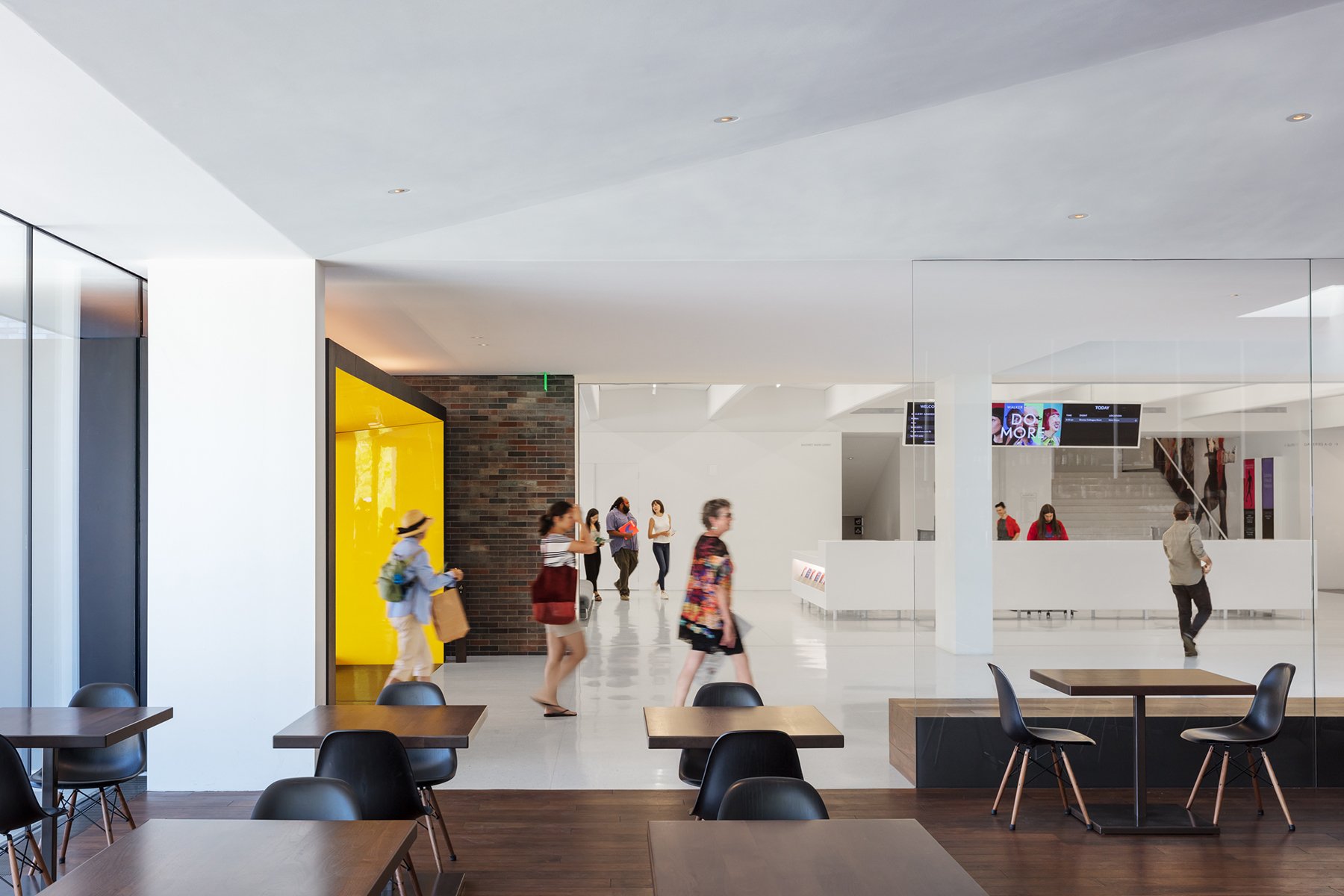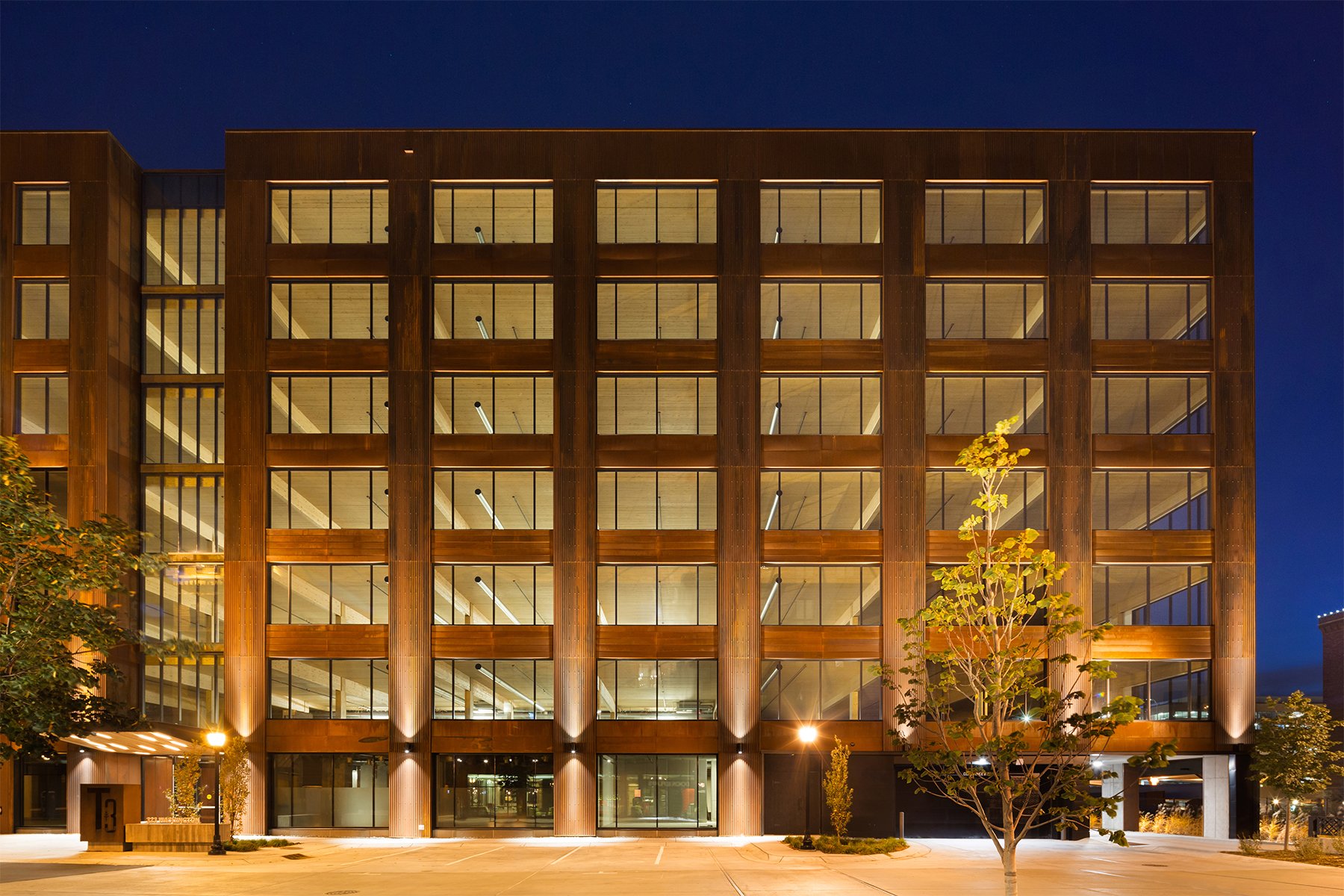In Conversation: AI and Architecture
Architects Trevor Bullen, AIA, NOMA, dean of Dunwoody College of Technology’s School of Design, and Karen Lu, AIA, NOMA, a design director at Snow Kreilich Architects, highlight the promise and shortcomings of AI in architecture
Interview by Mary-Margaret Zindren, CAE | November 21, 2024
Architects Trevor Bullen, AIA, NOMA, and Karen Lu, AIA, NOMA, at the office of Snow Kreilich Architects in Minneapolis. Photo by Round Three Photography.
TECH CHECK
This interview appeared in the 2024 ENTER print annual, available for purchase here.
I know both of you have been thinking and talking about AI from a lot of different angles over the past few years. What conversations are you having right now?
Bullen: We’re wrestling with how to lean into AI. How do we work with students to help them understand both the power of AI and the ethical considerations that go into using it? How do we position our students to be leaders in this field going forward?
Lu: We’re having studio-wide conversations about AI—trying to lessen the anxiety or fear there may be around it. It’s important to realize we’ve already been using it. Trevor, do you remember when we were using Photoshop way back when? To use the lasso tool to cut something out—like a figure in a background—we had to zoom in to the pixel level; it could require a hundred little selection points. Now, there’s a button in Photoshop to “remove background.” It’s not perfect, but it saves a ton of time. That’s AI being used for super-basic, repetitive tasks.
Karen, I know you’ve been talking about AI at the national level with your work on the AIA Strategic Council. You’ve also been looking at the kinds of bias that can show up with AI, including bias that stems from AI being drawn from the world of data that already exists.
Lu: Yes. There’s also bias in who has access to these tools and who is developing them.
And that’s partly why some architecture firms are only using AI within their own datasets, so they can better control the influences, the inputs, to the system.
Bullen: I think that’s the crux of the matter. The quality of the inputs is the quality of the output. If AI is drawing on lots of existing datasets, and we understand that the status quo does not prioritize equity, then there’s a fundamental issue that AI is not going to help architecture course-correct as we go forward. That’s a big challenge.
“AI makes it seem as though you’ve made all these decisions when all you’ve done is gather the data. It allows you to start the process from a more robust place, but it’s not actual content. It’s not curated or edited.”
Another primary concern is that AI can make things seem more real than they are. Even before AI, we had photorealistic renderings that made conceptual ideas look like they were already fully baked. We’d often have to rein in our clients because they would see them and go, “Oh, you’re done!” My fear is that AI will create an illusion of thoroughness, of depth of understanding that may not be there.
Lu: AI makes it seem as though you’ve made all these decisions when all you’ve done is gather the data. It allows you to start the process from a more robust place, but it’s not actual content. It’s not curated or edited.
We’ve used it in our studio very early on in projects before we’ve decided on a direction. An example might be a screen to define a parking area. If we’re talking about the amount of form or figure that it has, the amount of transparency—is it striated? what is the pattern?—AI can spit out a hundred different ideas. And it does that really quickly.
Photos 1–5 by Round Three Photography.
The role of the architect, then, is to edit down the huge volume of possibilities to what actually reflects the client’s values, the budget, the site considerations . . .
Lu: Exactly. AI isn’t able to address the complexity of the entire design problem.
Bullen: A key human skill will become how you write the prompts to get the best outputs. AI can generate so much; the output can be prolific. You need somebody who really understands how to leverage the tool so that you’re not wading through hundreds and hundreds of things that are not usable, actionable concepts.
Is there promise with AI to better deploy understanding around design for climate change?
Bullen: I want to believe there are some opportunities with newer building technologies—mass timber products, for example—that are slow to market. The expertise is building within the profession, and I suspect there’s an opportunity for AI to help accelerate that knowledge base.
Lu: I’m even more optimistic. There’s a growing realization that AI could enable more collaboration between architects and designers, the construction industry, and clients [on design for climate change]. And if the basic tasks take us less time, what are the opportunities for architects to add even greater value for clients?
I’ve been in presentations that show what AI can generate with just a few prompts. It’s mind-blowing for someone like me, who isn’t an architect. But when architects in the audience see the detailed floor plan, they start laughing. They see immediately what AI has done very wrong.
Lu: [Laughing] I haven’t yet seen a beautiful AI-generated floor plan!
Bullen: That’s true. I’ve seen some nice ideas, but not a well-resolved plan. That’s still to come.








